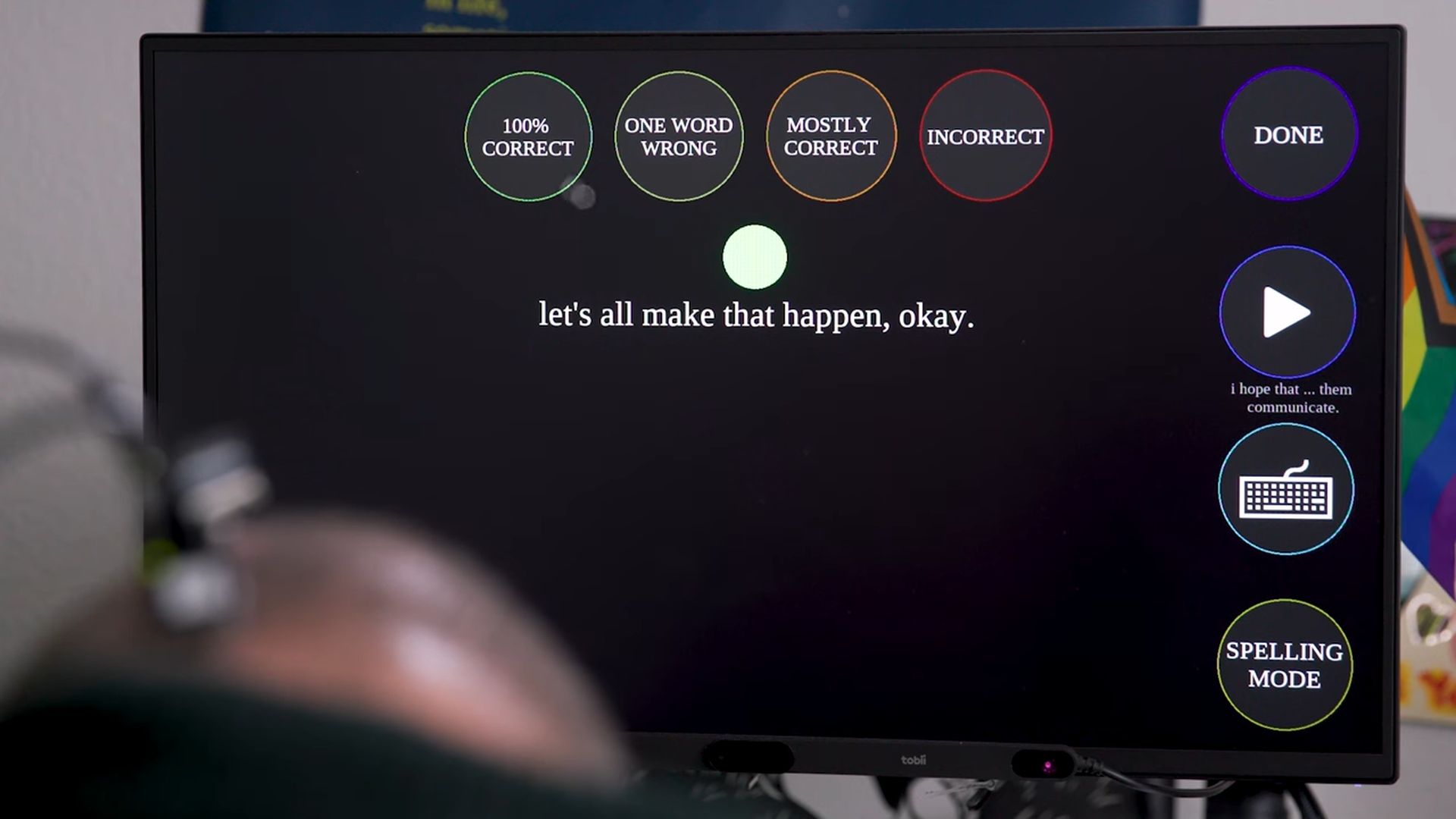AI helps ALS patient speak again

Researchers at UC Davis Health have developed a new brain-computer interface (BCI) that allows people with severe speech impairments, like those with amyotrophic lateral sclerosis (ALS), to speak again. This cutting-edge technology translates brain signals into speech with impressive accuracy, up to 97%.
ALS, also known as Lou Gehrig’s disease, is a serious condition that attacks the nerve cells in the brain and spinal cord. This leads to the loss of muscle control, making it hard to move, speak, and eventually breathe. For people with ALS, losing the ability to communicate is one of the hardest parts of the disease.
How does the new BCI work?The new BCI developed by UC Davis works by reading brain signals related to speech. Here’s how it functions:
- Brain signal reading: The BCI picks up electrical activity from the brain that happens when a person tries to speak.
- Signal translation: These signals are then converted into text by a computer.
- Text-to-speech: The text is spoken out loud by the computer, allowing the person to communicate.
 Credit: UC Davis Health
Credit: UC Davis Health
The new brain-computer interface (BCI) uses artificial intelligence (AI) to help people with severe speech impairments communicate. AI interprets brain signals and translates them into text, which is then converted into spoken words almost instantly. The voice was generated using artificial intelligence (AI) that was trained on existing audio recordings of his voice before he developed ALS. The BCI also uses machine learning to improve its accuracy over time by learning from the user’s brain activity.
Case study: Casey HarrellOne of the first people to use this new BCI is Casey Harrell, a 45-year-old man with ALS. Before using this technology, Harrell’s speech was very hard to understand, and he needed others to help him communicate.
In July 2023, Harrell had the BCI device implanted in his brain. The device has four tiny electrode arrays placed in a part of the brain that controls speech. These electrodes record the brain’s signals and help translate them into words.
Harrell’s results were amazing. During the initial training, the BCI achieved 99.6% accuracy with a small set of 50 words. Later, the system was tested with a much larger vocabulary of 125,000 words and still maintained a 90.2% accuracy rate. This level of accuracy is higher than many smartphone apps designed to understand spoken language.
For Harrell, being able to communicate again has been life-changing. He can now talk with family and friends more effectively and express himself in a voice that sounds like his own before ALS affected his speech.
“This technology is helping people reconnect with their lives and society,” Harrell said.
Looking forwardThe BCI technology is still being tested and improved. The goal is to make it available to more people who have lost their ability to speak due to conditions like ALS, spinal cord injuries, or strokes.
The team at UC Davis is working to make the BCI faster, more accurate, and easier to use. They hope this technology will continue to help people communicate and improve their quality of life.
Featured image credit: UC Davis Health/YouTube
